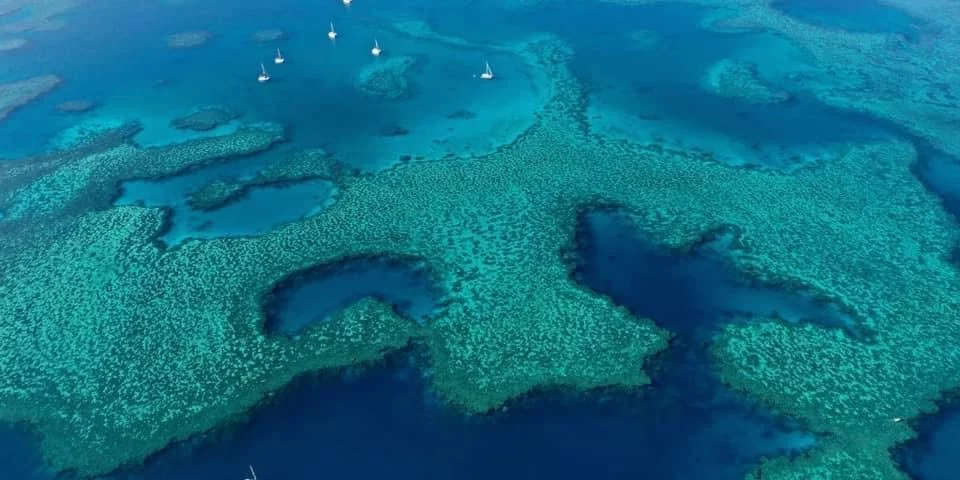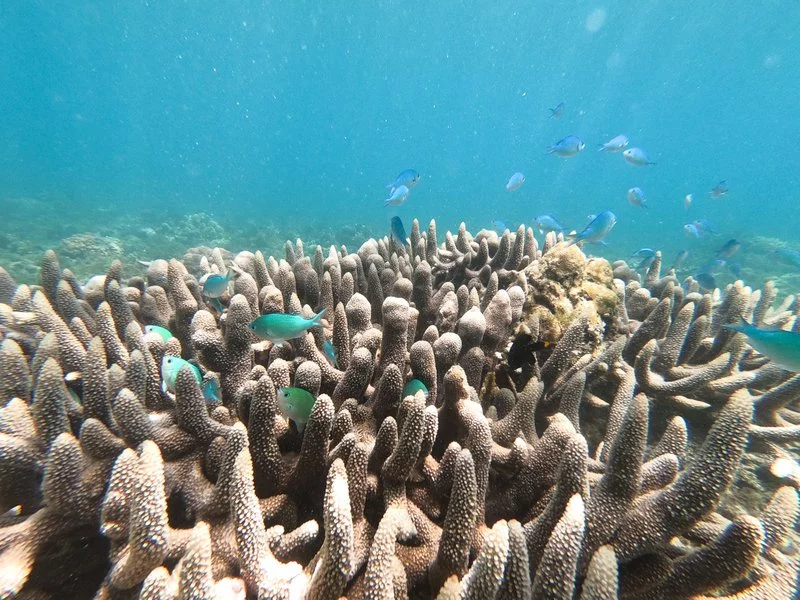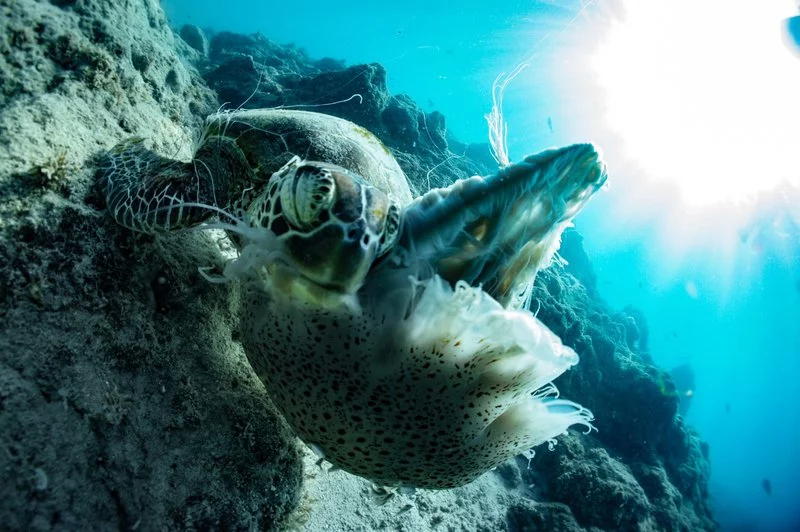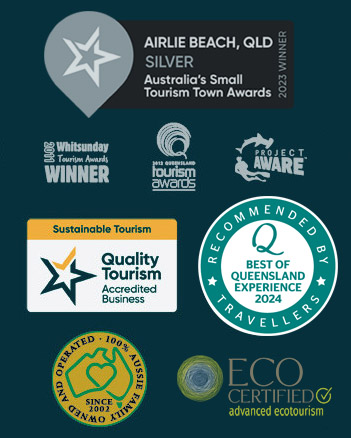More than 2 million people visit the Great Barrier Reef every year, and we are not
surprised. The uniqueness of this natural creation is so great that everyone wants to see it at
least once.
We put together some amazing facts about the Great Barrier Reef to help you understand why it
deserves to be explored.
Is one of the 7 natural wonders of the world.
The Great Barrier Reef is a natural gift with unbeatable ecological importance and one of the 7
Natural Wonders of the World. The title of ‘natural wonder’ is given to natural sites or monuments
that were not made or altered by humans, and is easy to understand why the Great Barrier Reef is
part of the list.
Its size, beauty and marine life are some of the reasons why the Great Barrier Reef is a
protected area and a World Heritage. It was recognised as a World Heritage due to its outstanding
universal value and for being a remarkable place on earth with immense natural worth.
There are 3000 individual reef species, 760 fringe reefs, 600 tropical islands and 300 coral
rays.
Is the only living thing that can be seen from outer space.
The Great Barrier Reef is the largest living structure on the planet and effectively, it can be
seen from outer space. Crazy, huh?
The GBR is greater in size than Tasmania and Victoria combined and 70M football fields would fit
inside the marine park. Now that you know how enormous it is it doesn’t seem so out of mind that it
can be seen from the space right?
Its extension begins near the southern Coastal Town of Bundaberg and finishes up past the
northern tip of Cape York.
Now imagine a 348,700km network of marine sanctuaries … who can resist exploring it?
Is extremely ancient.
If you are an animal lover, you will not want to miss the magical experience of getting close to the incredible variety of animal species that live in the Great Barrier Reef.
The Great Barrier Reef is home to 1500 species of fish, 134 species of sharks and rays, and six of the world's seven species of threatened marine turtles, and more than 30 species of marine mammals, including the dugong.
The GRB provide a natural habitat for thousands of sea creatures and although all of them are important for the ecosystem, some of them deserve a special mention. Not only because of their beauty and rareness but also because some of them are threatened to disappear.
Like the epaulette shark, a small and friendly shark that use their colours and patterns to hide from bigger predators or the clownfish, which is on everyone’s bucket list of animals to see during their tropical reef adventures.
Other good examples are the majestic manta rays that live in this area. Watching these beautiful animals swimming in their natural habitat is an unforgettable memory. A similar thing happens when you are able to spot humpback whales during their seasonal migration to the north.
It is where the biggest reproduction event on the planet takes place.
Have you ever heard about coral spawning? Is basically the reef having sex! Each year, after the full moon of November an amazing event takes place in the Great Barrier Reef, the world’s largest synchronised coral spawning.
During this time, which lasts around 30 minutes, coral polyps (the thousands and thousands of tiny animals that form the Great Barrier Reef) simultaneously release eggs and sperm bundles for external fertilisation.
As you may be suspecting, the biggest reproduction on earth creates a spectacular underwater show totally visible and unique for the human eye.
It can be appreciated in many ways from many places.
The Great Barrier Reef can be explored in many ways and you don’t necessarily need to know how to swim.
Although scuba diving and snorkelling are probably the most popular way of discovering this natural creation, there are other amazing ways of seeing it.
Anyone who visits the region can have a once in a lifetime experience choosing to see the Great Barrier Reef from above! Helicopter and aeroplane tours are offered in Airlie Beach, and if you are feeling even more adventurous, sky diving will take your breath away.
The Whitsundays Islands are the sailing mecca and where tourists and locals can appreciate the GBR from a comfortable vessel. SUP boarding and clear bottom kayaks are also great ways of becoming one with nature.
Wings Sailing Private Chartersoffers private and extended charters to the Outer Great Barrier Reef, where the true colours, shapes and secrets of this unique organism come to life.
Sadly, is threatened.
It is not news that the Great Barrier Reef is in danger due to the rising greenhouse gas emissions and other human activity. There were mass bleaching events in the past and we all need to work together to protect this gift from mother earth.
According to the Great Barrier Reef Foundation, “ Climate change is the greatest threat facing the reef and a challenge we must all tackle together. The growing combination of rising water temperatures, poorer water quality from sediment run-off and pollution, as well as more severe cyclones and crown-of-thorns starfish outbreaks, are just some of the threats creating a perfect storm for our Reef and the marine life that depends on it”.
Is very important to remember that any coral can be touched, step on or removed.
Is the Great Barrier Reef dangerous?
The answer is no. If you act smart and with common sense, is unlikely to be harmed by exploring
the Great Barrier Reef. Your safety depends largely on how you act while you are there.
Safety tips to visit the Great Barrier Reef:
Use stinger suits from October to March.
During the warmest months of the year, the number of stingers highly increases, especially
Irukandji and Box Jellyfish, which can be fatal to humans, although is not very common.
Always listen to emergency procedures.
It is very important to communicate your insecurities to the crew and pay attention to their
recommendations. Make sure that you know how to call their attention in case of an emergency.
If you can’t swim properly, don’t risk it.
If you don’t know how to swim or you don’t feel confident enough, try with a flotation device, or
check if there are any kayaks or SUP boards available.
Watch your step!
Not only it is not allowed to step on any coral as this may harm the protective layer of mucus
that protects the coral, but it can also hurt your feet.
Book Your Next Outer Great Barrier Reef experience
If you are thinking of visiting the
Outer Great Barrier Reef and discover this World Heritage in
a unique way, put in touch with one of our experts. Our
Outer Reef Private Charter is an
all-inclusive experience, with water sports equipment included, as well as meals, a friendly host
and an experienced skipper.






